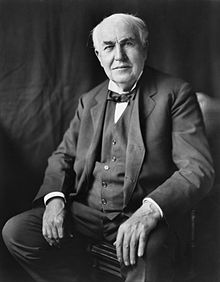Humanities › History & Culture: The Basics of Patenting Ideas Essential Elements of Protecting an Invention
:max_bytes(150000):strip_icc():format(webp)/patentanidea-56b000195f9b58b7d01f5312.jpg)
A patent is a legal document that is granted to the first to file on a particular invention (product or process), which allows them to exclude others from making, using, or selling the invention that is described for a period of twenty years from the date that they first filed the application.
In writing your patent application you will be including detailed drawings, writing several claims, referring to many patents belonging to other people, and evaluating other patents that have already been issued to see if your idea is truly unique.

Early Preparation: Search and Scope
In order to submit paperwork for a patent of a particular product or process, your invention should be completely finished and have a working, tested prototype because your patent must be based on what your invention is and modifications after the fact require another patent. This is also beneficial to your long-term business plan because, with a finished invention in hand, you can do a market evaluation and determine how much this invention could make you down the road.
What you find about other inventions like yours will determine the scope of your patent. Maybe there are other inventions that do the same thing as your does, however, your invention does it in a better way or has an additional feature. Your patent will only cover what is unique about your invention.

The Patent Lawyer
The patent attorney you hire must be skilled in the area of your invention—for example, engineering, chemistry, or botany—as they will examine your invention completely and then do their own patent search in order to determine the uniqueness of your creation.
Your lawyer might find a patent or patent application that is too similar to your invention, and a good lawyer will tell you upfront if this makes your invention unpatentable. However, if your invention does prove to be unique, your lawyer will proceed to write your patent application, which will include:
- A description of any “prior art,” earlier inventions that are relevant to your invention
- A brief summary outlining the new invention
- A description of the “preferred embodiment” of the invention, or a detailed account of how your idea will actually be put into practice
- One or more “claims,” which are the most important element of the application as they are the actual legal description of your invention
- Drawings, if necessary
Your patent lawyer will probably cost you from $5,000 to $20,000 for services rendered, but a good patent application is essential for getting a strong patent, so you should not let this price tag scare you away from protecting a very strong idea from theft or reproduction. In order to save money, do whatever preliminary work you can by yourself—even if that lawyer will be redoing the preliminary reports, it should cut down on billable hours the lawyer can work on the project.

Patent Pending: The Patent Office
Once complete, the patent application is sent to your Patent Office along with a submission fee, which for American inventions is the United States Patent and Trademark Office (USPTO).
Patents usually take between two and three years to complete as you will have to wait until a patent examiner examines and approves your application. Additionally, most patents are rejected on the first admission, then the dance begins as you lawyer makes amendments and resubmits the application until it is accepted (or not) and you have your patent.
After your patent application had been submitted, though, you do not have to waste time waiting around for your product’s patent to be approved. You can immediately label your invention as patent pending and start marketing it as such, but be warned that if your patent is ultimately rejected, others can and will begin making replicas of your design if they’re highly profitable.





:max_bytes(150000):strip_icc():format(webp)/patentapplication-56a530a05f9b58b7d0db650f.jpg)
:max_bytes(150000):strip_icc():format(webp)/181817407-F-56b005173df78cf772cb1c01.jpg)
:max_bytes(150000):strip_icc():format(webp)/GettyImages-175138278-58f199ec5f9b582c4d63d7a7.jpg)
:max_bytes(150000):strip_icc():format(webp)/GettyImages-JH5986-001-58f411dc3df78cd3fc607fd2.jpg)
:max_bytes(150000):strip_icc():format(webp)/GettyImages-522974546-58fbcb0a5f9b581d5961c60d.jpg)
:max_bytes(150000):strip_icc():format(webp)/spring-shoes-JH5986-001-5ade4ce8a18d9e003748bf9a.jpg)
:max_bytes(150000):strip_icc():format(webp)/focused-young-male-designer-using-laptop-750415331-5c43e99f46e0fb00015a8e78.jpg)
:max_bytes(150000):strip_icc():format(webp)/GettyImages-940028024-fb3ab270c89e4b5b9e3d9f315e96f07e.jpg)
:max_bytes(150000):strip_icc():format(webp)/456050377-F-56b0044f5f9b58b7d01f7604.jpg)
:max_bytes(150000):strip_icc():format(webp)/deciding-56b002ff5f9b58b7d01f67f1-5c5a14cd46e0fb00013a3719.jpg)
:max_bytes(150000):strip_icc():format(webp)/LewisLatimer-222cb6edcbf74742b3ed542323f929e7.jpg)
:max_bytes(150000):strip_icc():format(webp)/GettyImages-503690410-58fbbe813df78ca1596a565e.jpg)
:max_bytes(150000):strip_icc():format(webp)/Spinning_jenny-59226c535f9b58f4c03f04c9.jpg)
:max_bytes(150000):strip_icc():format(webp)/apple-s-latest-product-the-imac----51096325-5c3d4b0f46e0fb0001123369.jpg)
:max_bytes(150000):strip_icc():format(webp)/GettyImages-161933989-59e44078aad52b00113debf7.jpg)
:max_bytes(150000):strip_icc():format(webp)/hands-typing-on-laptop-computer-638149788-5a68a783875db900367b1949.jpg)







